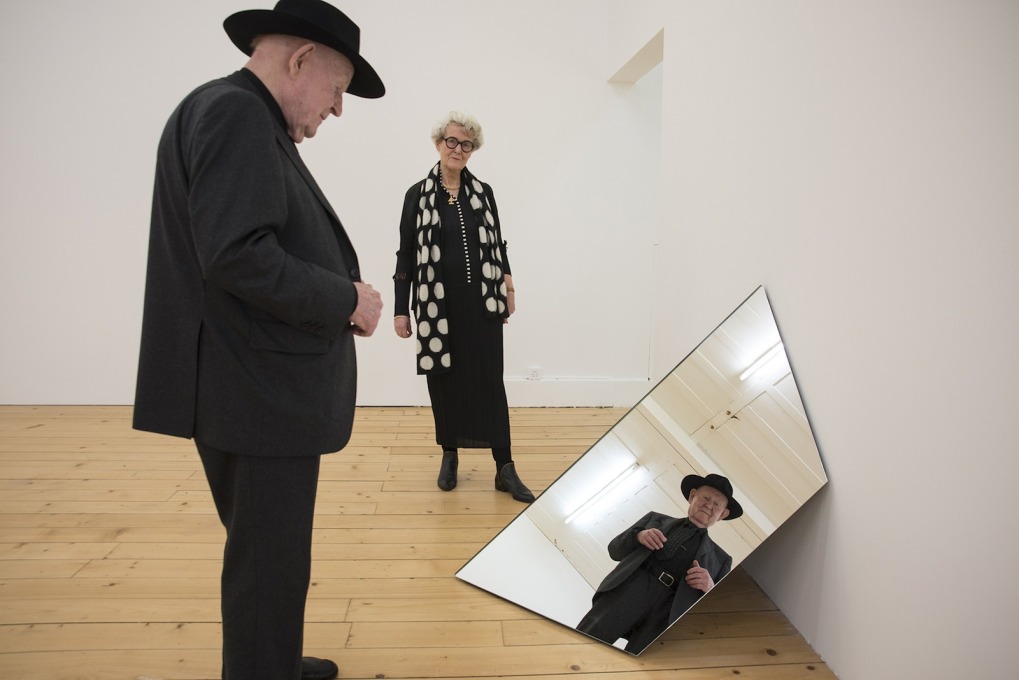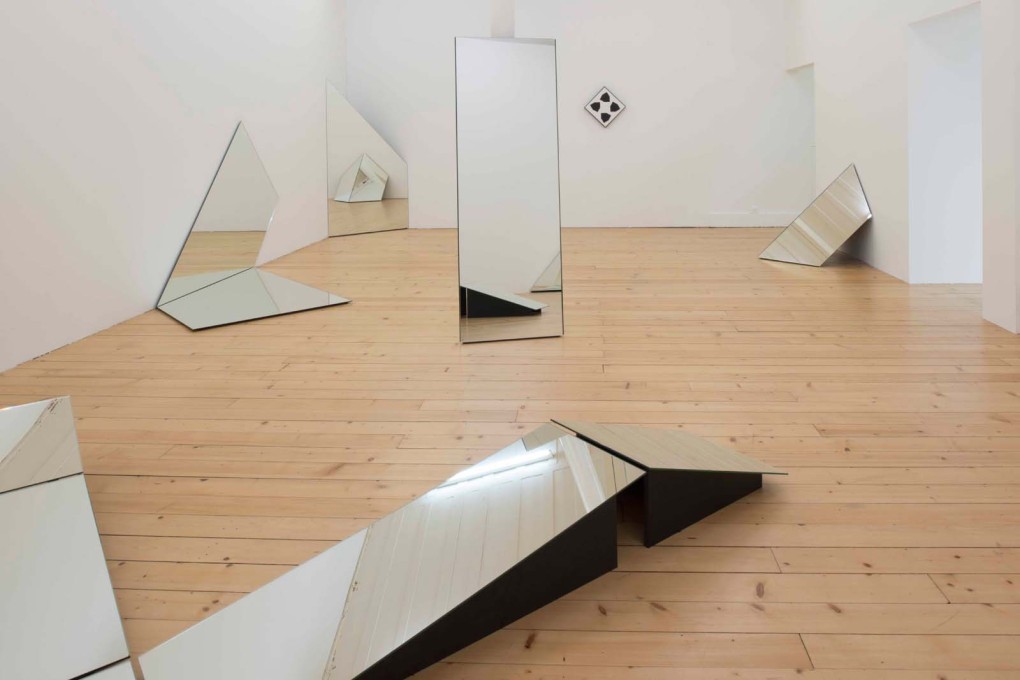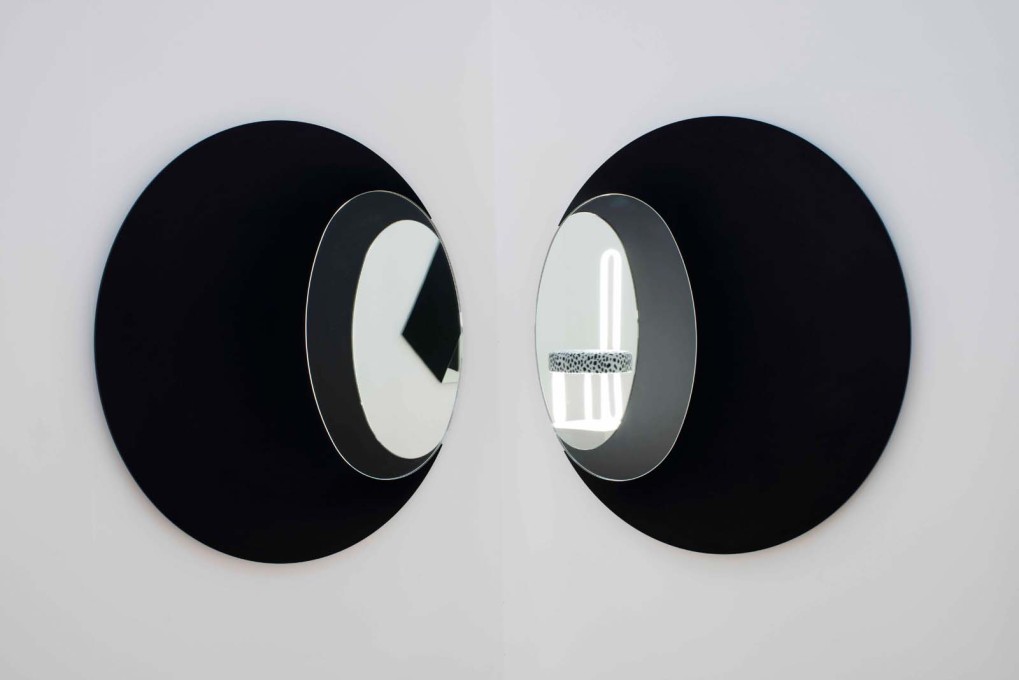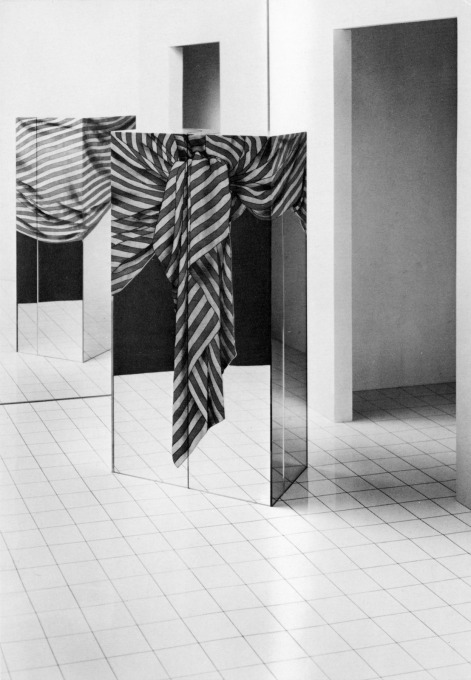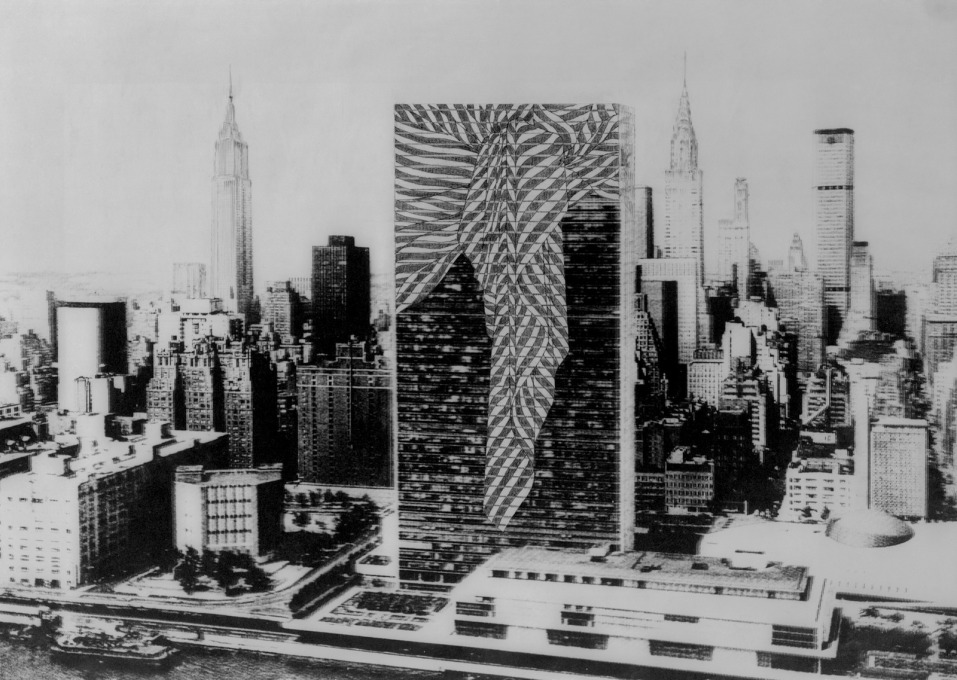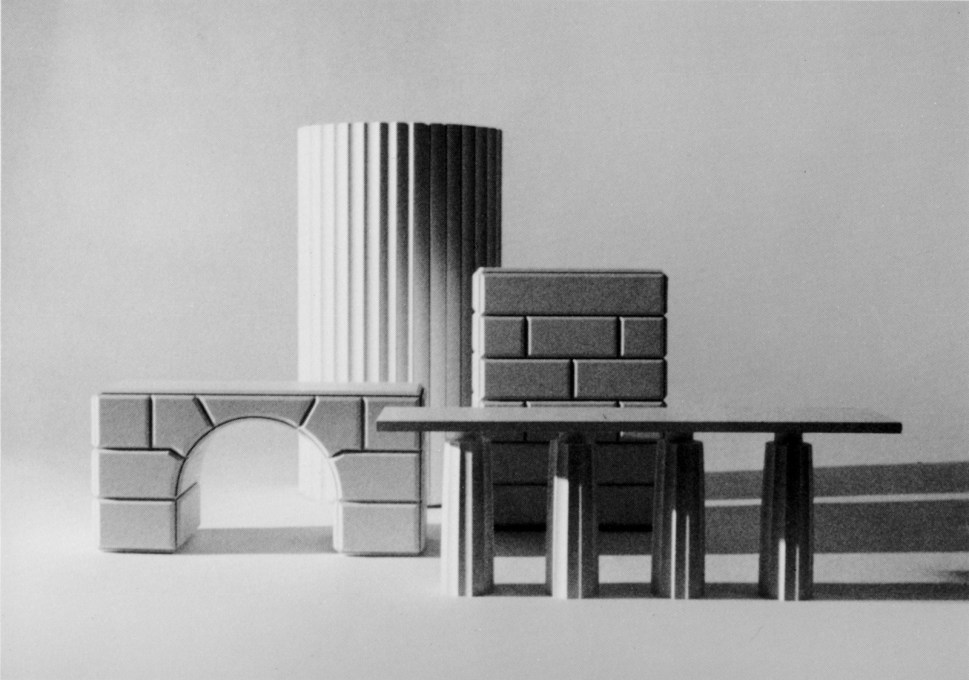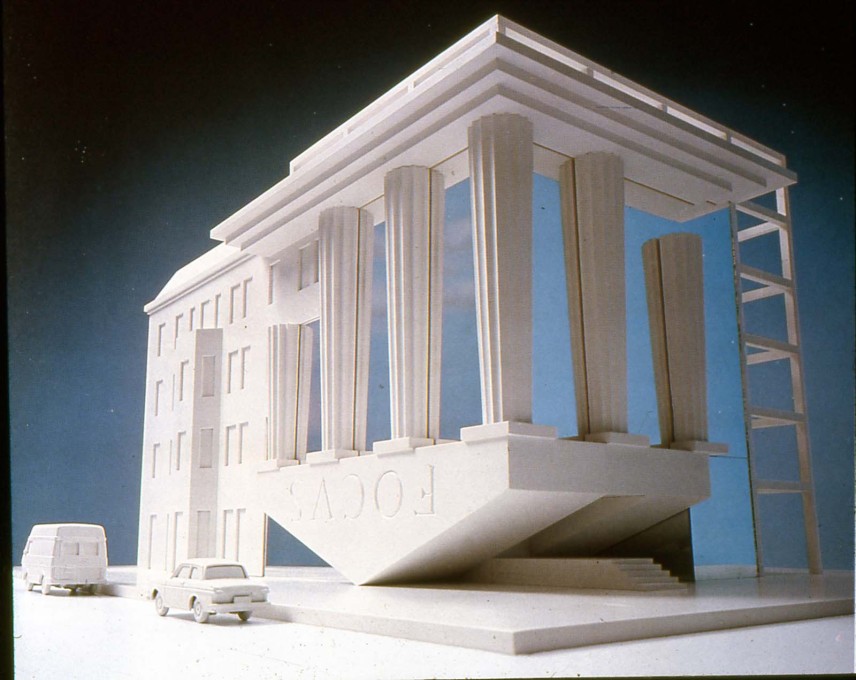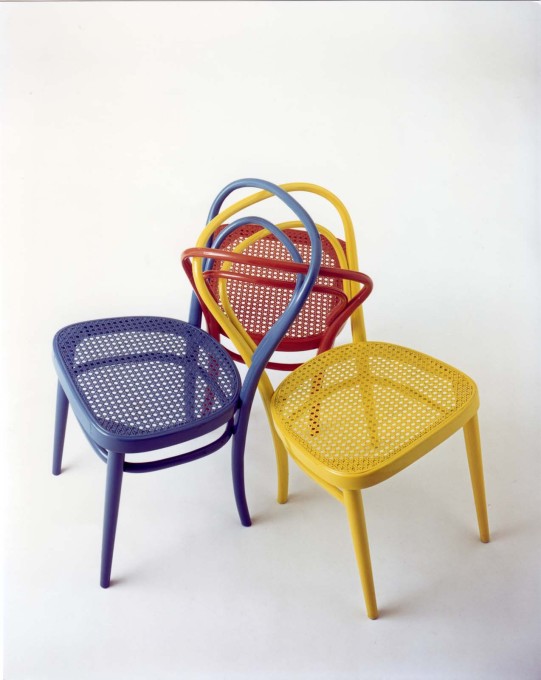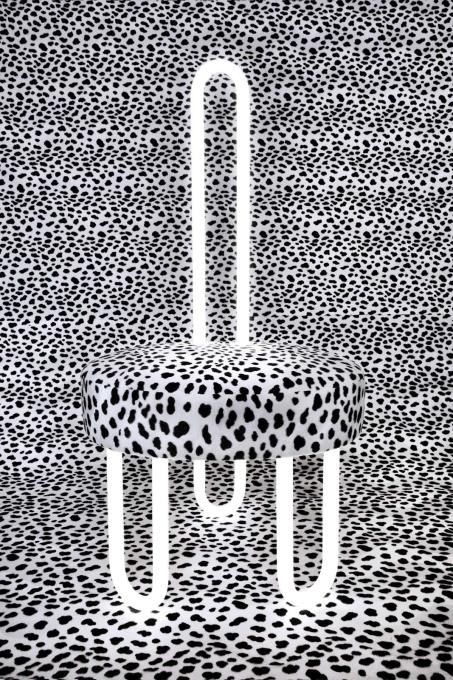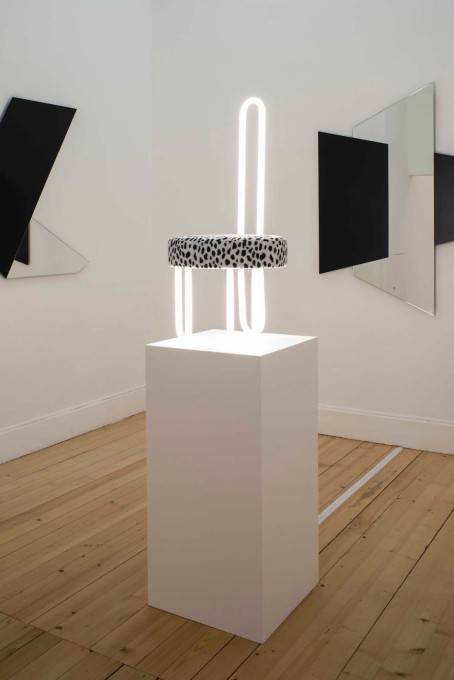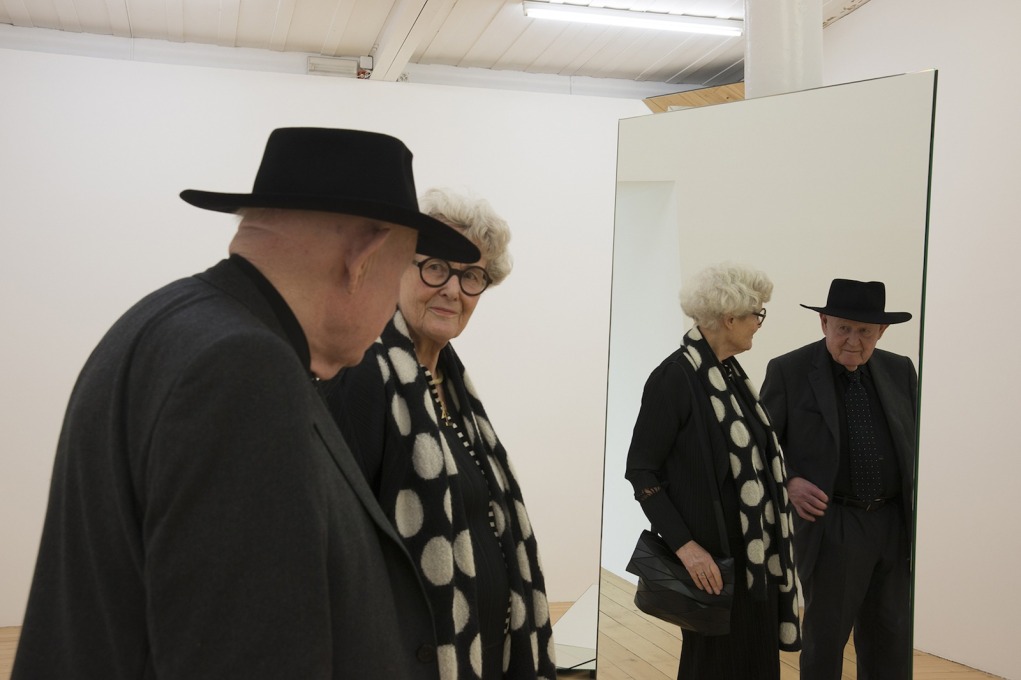With the touch of Pomo in the air at the moment, what better time for an exhibition reassessing the work of the Swiss designer-duo Trix and Robert Haussmann. Aoife Rosenmeyer finds a show full with investigation: of space, illusion, delight – and ever-present humour.
There has been a revival of European interest in the work of designer-architects Trix and Robert Haussmann over the past two years, helped by their inclusion in the V&A Museum’s 2011-12 show Postmodernism: Style and Subversion 1970–1990, which took place not only in London but also in Zurich (it was displayed in a reduced version at the Landesmuseum). In Switzerland, art spaces have championed the Haussmanns’ oeuvre since then: Fredi Fischli and Niels Olsen of Zurich’s Studiolo staged the exhibition Log-O-Rythmic Slide-Rule (2012) which led to a publication they edited for Patrick Frey (2012) and to another Haussmann show at Hard Hat in Geneva (2013). In advance of a major exhibition on the duo at the Austrian Kunsthaus Bregenz planned for 2015, a current presentation at Fri Art in Fribourg, created in collaboration with the designers, looks both backwards and forwards.
The Haussmanns are part of the fabric of Swiss design, particularly in Zurich, where their influence can be strongly felt inside the Hauptbahnhof and various other offices, bars and retail spaces that they designed. Perhaps it is as a result of this pervasiveness in everyday life that art contexts are now proving useful in reframing their work, offering a revitalised perspective. At Fri Art, a lower floor provides a historic overview with a collection of furniture from 1967-88 and mirror pieces dating from 1977-81. These are taken from the collection of interiors and furniture manufacturer Röthlisberger, long-time collaborators with the Haussmanns. Robert Haussmann wrote the manifesto Manierismo Critico in 1981, in the midst of this fruitful period, and the furnishings put this response to their immediate design forebears into practice, countering what they regarded as the joyless stripping down that had occurred as a result of Modernism in design and architecture. The results include famous pieces like the Mauerkommode, Lehrstück I: Möbel als Architekturzitat (“Wall Chest, Lesson I: Furniture as Architectural Quotation”, 1977), a chest of drawers whose olive-ash drawers are chamfered to take on the form of the noble building blocks of a classical edifice, and Säulenstumpf, Lehrstück II: Störung der Form durch die Funktion (“Pillar-Stump, Lesson II: Destroying Form through Function”, 1978). This Säulenstumpf is a stack of drawers that make a Greek column on a squat plinth, the form of the column – of which two are on display – corrupted as soon as the drawers swing open to fulfil their function.
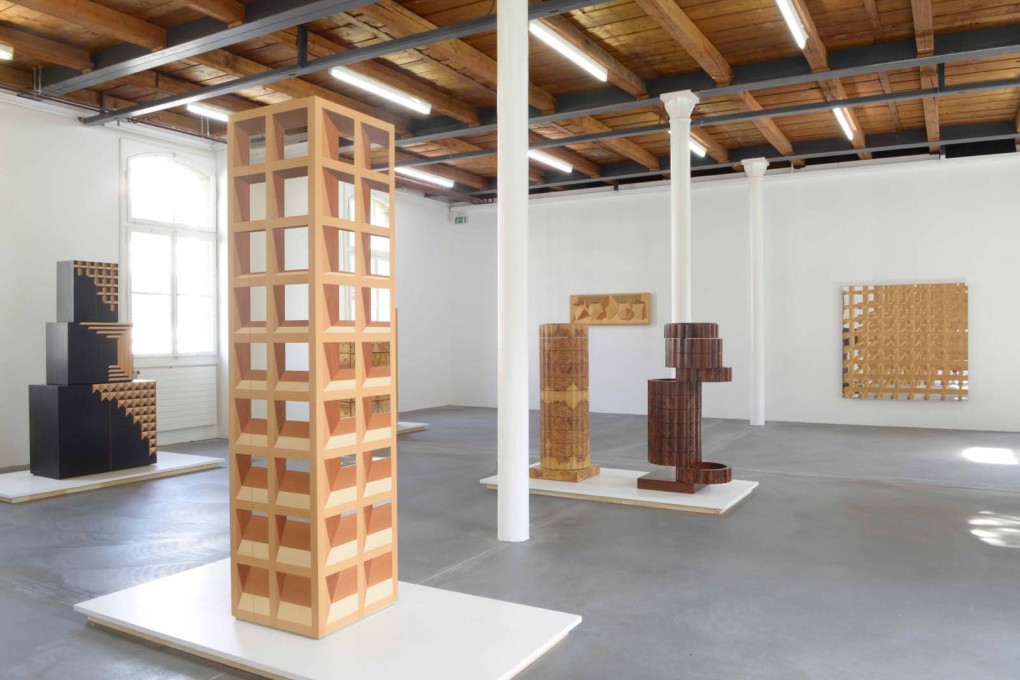
Fine intarsia pieces are also to be found, such as the 220-centimetre-tall Torre (“Tower”) chest, its surface in this 1993 fabrication a combination of cherry, maple, beech, walnut, service wood and mirrors. The object is a plain form, but the inlaid wood makes illusions of empty shelves. Designs such as these demonstrate the designers’ concern with detailed and sophisticated fabrication but, equally, their humour. For them, if the Modernist purification process had gone too far, they looked to Mannerism and Illusionism for means of investigating, or returning to the investigation, of space, illusion and – last but not least – delight. This attitude is evinced also in four mirror pieces on display in Fribourg, each made up of several smaller mirrors within wooden frames that are arranged together. Thus the spare gallery architecture is reflected back in various forms constructed from these shapes: as an uneven arch, criss-crossing rectangles, or a stack of dice.
One floor above this conventional display, the designers themselves transformed the exhibition space. Entering through a bare white corridor, the visitor emerges in a room in which eleven objects – mirrors supported by MDF and one abstract painting of four irregular hexagons – distort a clear assessment of the space. These are only traditional wall-mirrors but also prisms, nestled in corners, leaning walls or arranged on the floor; one has the outline of an unfolded package, but that air of practicality is frustrated by its evident uselessness for that purpose. Collectively they disorient the visitor as a prelude to the final room in the exhibition, in which the frequently cited Neon Chair, designed in 1967, is displayed, its faux dalmatian skin seat and neon-tube back placed high on a plinth. It works as both altar and deflation of the seriousness inherent in a retrospective exhibition. In this inner sanctum the Haussmanns laugh at themselves – perhaps because they are not yet ready to be confined to the museum.
– Aoife Rosenmeyer is a critic and translator based in Zurich. In 2008 she founded the itinerant debate series art+argument. @artandargument
Trix & Robert Haussmann
Collection Röthlisberger / Miroirs – Spiegel
Until June 15, 2014
Fri Art
Petites-Rames 22
Case postale 582
CH-1701 Fribourg
Switzerland




